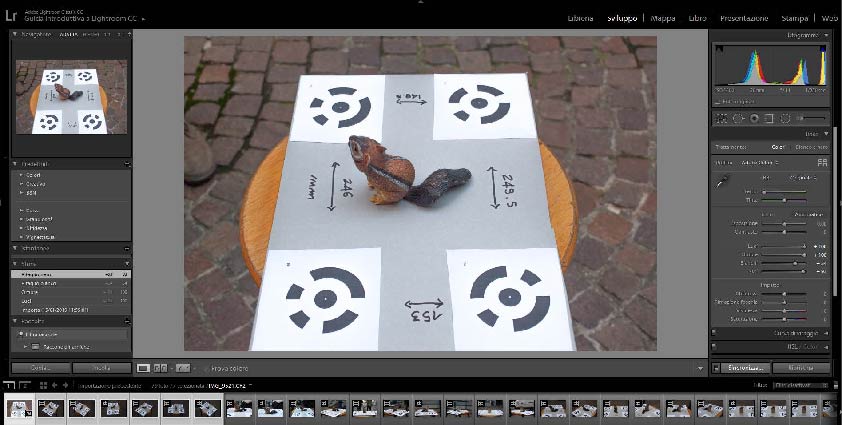RM Project
The project consisted in generating a digital 3D model by capturing a real scene. Reverse modeling is based on specific technologies involving HW and SW tools and it is based on active sensors as laser scanning or passive scanning as photogrammetry.
In this project both of techniques were approached. The squirrel toy is the result of practicing the 3D processing pipeline for generating a polygonal model starting from a set of acquired 3D data.
1. Laser
Scanning.
After scanning the squirrel and importing the obtained files in the program IMalign, the various scanned parts of the squirrel needed to be aligned with at least three matched points. Then, after analysing the best-fit alignment and evaluating the result, it was the time of surface corrections and filling the holes (ears, eyes and paws).
Final Render
The resulting 3D squirrel toy was rendered. The aim was to represent the exterior surface and exalt it. For this reason, the material choice was copper to better fulfil the task.

2. Photogrammetry.
After fixing the camera settings, such as lens and pixel size, the squirrel was photographed using focal lenght. Then, the JPEGs was corrected in Adobe Lightroom. With Agisoft Photoscan the markers were detected and aligned and a sparse dense cloud was generated.

Mesh and Texture creation
The dense cloud was cleaned in order to remove unusable parts like ground supports and scattered points. Then, a poygonal mesh was generated with HIGH parameters for the face count. These parameters are calculated on the number of points in the previous generated dense point cloud ratio (of 1/5).
The next step was to build the texture.
Final Comparison
Reality vs Textured Model
Here you can see the visual differences between the photograph of the real object, on the left, and the final render of the textured model reproduced using photogrammetry and 3D data, on the right side.
RM methodologies can be used in several Design applications:
- High-resolution survey for creating a new design in a pre-existing environment;

3. 3D capture of manual work on mock-ups generated through 3D printing of CAD models.
- Digitization of physical models representing design concepts made by hand;
- 3D acquisition for rendering of digitized real objects in synthetic scenes or vice-versa
